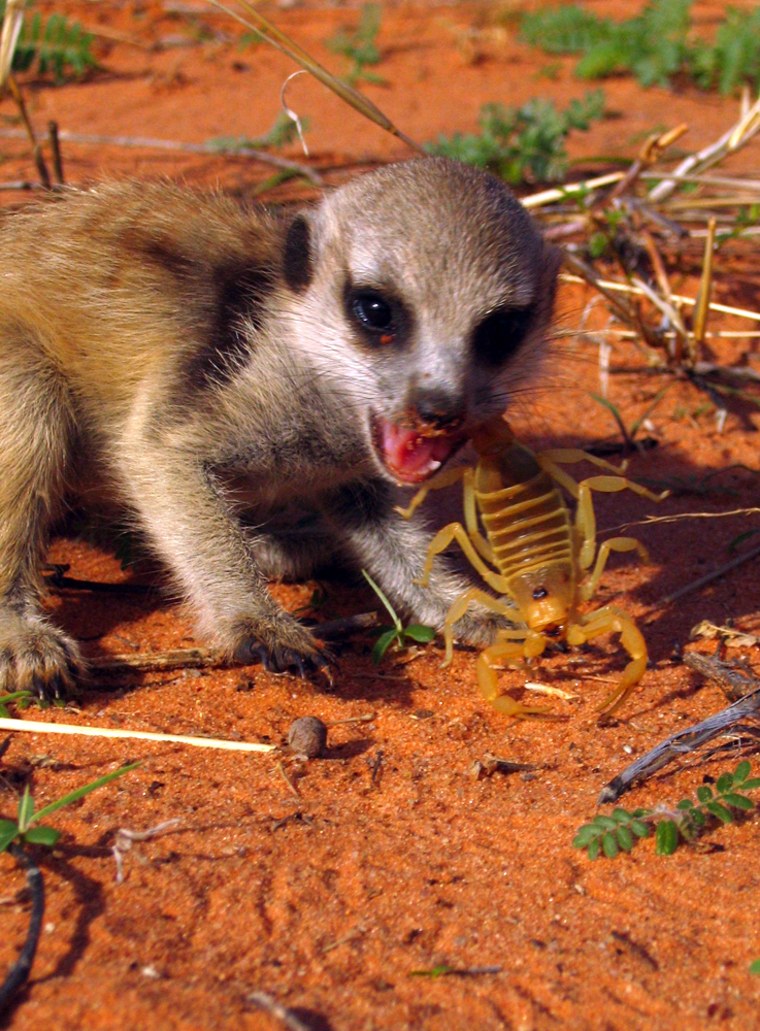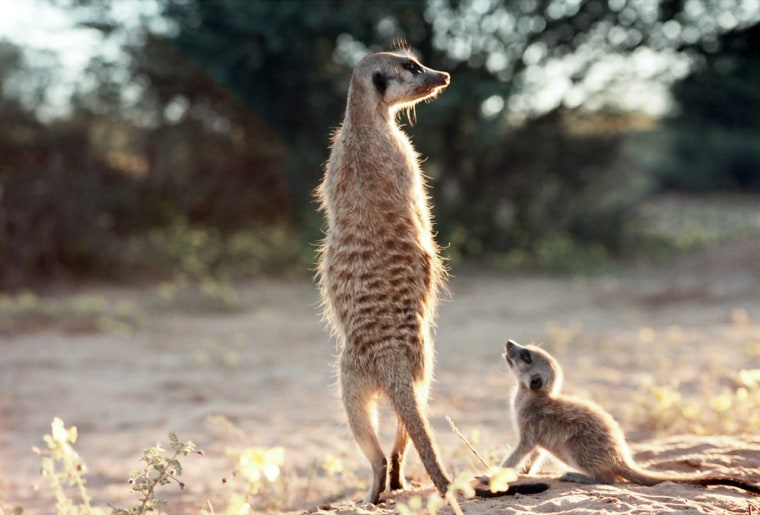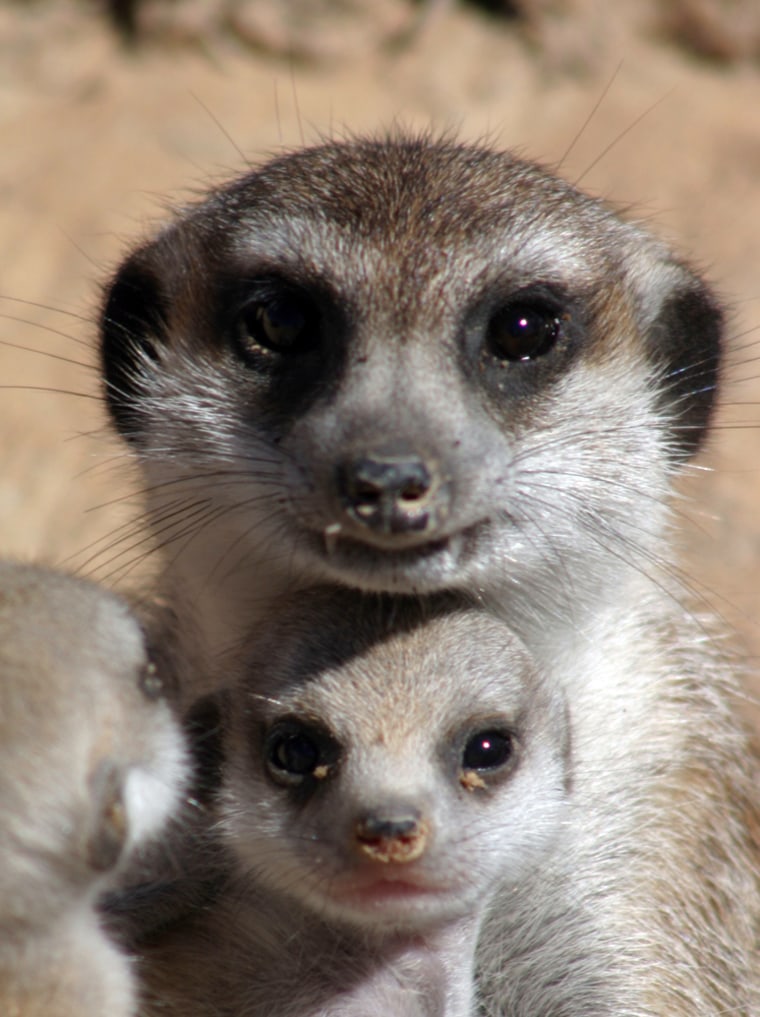It's hardly algebra or physics, but meerkats have been observed actively teaching their young, something not often seen in animals in the wild.
While the young of many species learn by observing older members of their group, it's less common for adults to take direct actions with the only goal being teaching.
Researchers from the University of Cambridge in England observed meerkats gradually introducing cubs to prey, showing them how to handle captured insects and even removing the stingers from scorpions before giving them to youngsters.
"Although there are anecdotal reports of teaching in species from chimpanzees to killer whales, until this year solid evidence was really lacking," said Alex Thornton, co-author of the report appearing in Friday's issue of the journal Science.
There had also been evidence of teaching by cats, Thornton added, but that was hard to confirm because of the difficulty of studying large cats in the wild.
Ideal species to study
Meerkats, small mammals, are not related to cats. They are about a foot (30 centimeters) long plus an 8-inch (20-centimeter) tail and weigh about 2 pounds (1 kilogram). They live in groups.
"Meerkats provide the ideal study species to examine these questions because they eat a whole range of prey items including lizards, geckos, scorpions, spiders and small mammals that are very difficult for young pups to handle," Thornton said.
While evidence of teaching has been rare, Thornton said, "My feeling is that teaching is a lot more common than we had previously supposed. I think teaching is probably very common among species in which dependent young must learn complex skills. Teaching of hunting, for example, is likely to be common among felines, mongooses and birds of prey."
In addition, he said, he expects to see reports of teaching among insect societies.
"The important thing is to consider under what conditions we might expect one animal to actively promote learning in another," he said.
Learning by observation
There are countless examples of animals learning simply by observation, he said, citing the spread of milk-bottle opening by birds in Britain as an example.

The difference is in such cases the experienced animal doesn't have to make any changes in its behavior for others to learn from it.
"For example, if a chimpanzee infant sees his mother probing for termites using a stick and later finds the stick his mother used, tries it out himself and learns how to fish for ants, there is no element of teaching involved," he explained.
In the case of the meerkats, however, the older animal catches prey and presents it, either dead or alive, to the youngster so it can learn to handle it — an activity that does not benefit the older animal.
Do meerkats intend to teach?
That doesn't mean the adult meerkats actually think about teaching.
The researcher wrote, "It is often assumed that teaching requires awareness of the ignorance of pupils and a deliberate attempt to correct that ignorance," but teaching does not necessarily need intention.

"In other words, in a romantic view, the adults recognize the need to teach the young. However, what they are thinking may be an unanswerable question," observed Steven Hopp, an animal behavior expert at Emory and Henry College in Emory, Va.
Animals teaching their young is probably more common than it appears, Hopp said, but "a clear demonstration, and particularly in a wild population, is the uncommon part."
"Thus, I think this paper is important, as it makes a clear and unambiguous case for the teaching behavior," he said.
The research was funded by Britain's Natural Environment Research Council.
